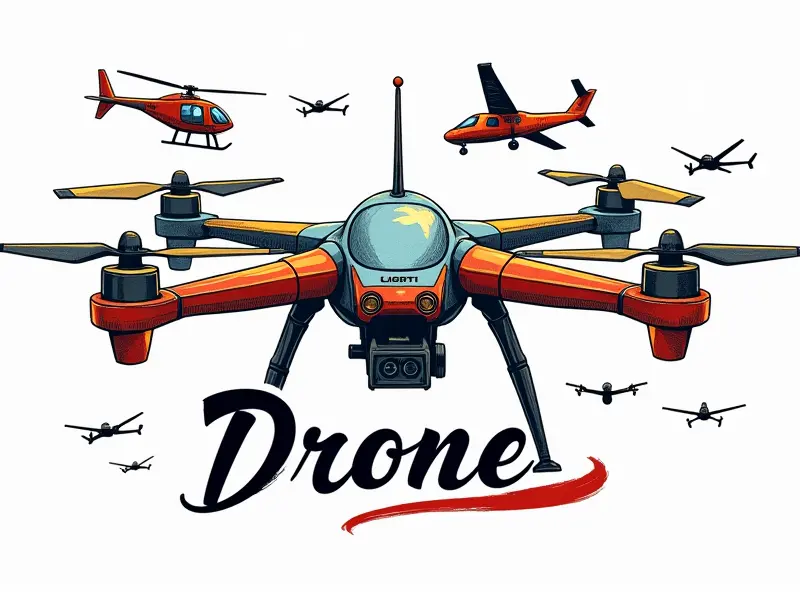What is drone GPS?

Why Drone GPS Is Essential
Drone GPS, or Global Positioning System, plays a pivotal role in the functionality and safety of unmanned aerial vehicles (UAVs). It enables drones to navigate accurately, maintain stability, and perform complex tasks with precision. Without GPS, drones would struggle to operate effectively in various environments, making it essential for both commercial and recreational use.
Benefits of Using Drone GPS
- Precision Navigation: GPS ensures that drones can fly along predefined routes with pinpoint accuracy, crucial for tasks like aerial photography or surveying.
- Safety Enhancements: By providing real-time location data and altitude information, GPS helps prevent collisions and ensures safe operation of drones in crowded airspace.
- Autonomous Flight Capabilities: Advanced GPS systems allow drones to operate autonomously, reducing the need for constant human intervention and increasing operational efficiency.
Accuracy in Drone GPS Explained
The accuracy of drone GPS is a critical factor that determines its effectiveness. Modern GPS receivers can achieve sub-meter accuracy, which means they can pinpoint locations within just one meter or less. This level of precision is vital for applications such as agriculture (for crop monitoring and spraying), construction (for site mapping and inspection), and environmental monitoring.
Understanding Drone GPS Technology
Drone GPS technology relies on a network of satellites orbiting the Earth, which transmit signals to GPS receivers in drones. These receivers calculate their position by measuring the time it takes for signals from multiple satellites to reach them. The more satellites used in this calculation, the higher the accuracy and reliability of the drone's positioning.
How Does Drone GPS Work?
The process begins with a drone receiving signals from at least four GPS satellites. These signals contain information about the satellite’s position and the time when the signal was sent. The drone calculates its distance from each satellite by measuring the travel time of these signals, then uses this data to triangulate its exact location on Earth.
Top Uses for Drone GPS Today
- Agriculture: Drones equipped with GPS can map fields, monitor crop health, and apply precise amounts of fertilizer or pesticides.
- Surveying and Mapping: High-accuracy GPS enables drones to create detailed 3D maps and models for construction projects, urban planning, and environmental studies.
- Search and Rescue Operations: Drones with GPS can quickly cover large areas during search missions, providing real-time data on the location of missing persons or objects.
Setting Up Your Drone's GPS
To set up your drone’s GPS system, follow these steps:
- Power On and Initial Calibration: Turn on your drone and calibrate the GPS module according to the manufacturer’s instructions.
- Satellite Acquisition: Allow the drone to acquire signals from at least four satellites. This process can take a few minutes depending on weather conditions and satellite visibility.
- Position Fix Confirmation: Once the GPS has locked onto enough satellites, confirm that your drone’s position is accurately displayed in its control interface.
Advanced GPS Capabilities in Drones
Modern drones are equipped with advanced GPS features such as RTK (Real-Time Kinematic) and PPK (Post-Processing Kinematic), which offer centimeter-level accuracy. These technologies use ground-based reference stations to correct satellite signal errors, making them ideal for precision agriculture, surveying, and construction.
RTK vs PPK: What’s the Difference?
RTK: Provides real-time corrections to GPS signals, offering immediate high-precision positioning. It is commonly used in applications requiring instant accuracy feedback.
PPK: Collects raw data during flight and processes it later using ground station information for post-flight analysis. This method is preferred when detailed accuracy records are needed over extended periods.
Future Trends in Drone GPS Tech
The future of drone GPS technology looks promising with advancements such as:
- Satellite Constellation Expansion: More satellites will be launched to improve global coverage and reduce signal latency.
- Integration with Other Navigation Systems: Combining GPS with other positioning technologies like GLONASS, Galileo, or BeiDou for enhanced reliability.
- AI-Driven Optimization: Artificial intelligence will play a bigger role in optimizing drone flight paths and improving navigation algorithms.
Precision Flying: Leveraging Drone GPS
To maximize the benefits of GPS in your drone operations, consider these tips:
- Regular Calibration: Keep your drone’s GPS module calibrated to ensure optimal performance and accuracy.
- Use High-Quality Receivers: Invest in high-quality GPS receivers that offer better signal reception and processing capabilities.
- Leverage Advanced Features: Take advantage of advanced features like RTK or PPK for applications requiring ultra-precise positioning.
Drone GPS vs Traditional Navigation
Compared to traditional navigation methods, drone GPS offers several advantages:
- Real-Time Data: Provides instant location updates and altitude information, crucial for safe operation in dynamic environments.
- Autonomous Capabilities: Enables drones to fly autonomously without constant human intervention, enhancing efficiency and reducing workload.
- Precision Mapping: Allows for the creation of highly accurate 3D maps and models, surpassing traditional surveying techniques in terms of speed and detail.
Benefits of GPS in RC Quadcopters
The integration of GPS technology into remote-controlled (RC) quadcopters has revolutionized their capabilities:
- Stable Flight: Helps maintain stable flight even in windy conditions, ensuring smooth and controlled operation.
- Return to Home Functionality: Enables the drone to automatically return to its starting point if signal is lost or battery runs low.
- Waypoint Navigation: Allows quadcopters to follow predefined flight paths with precision, ideal for aerial photography and videography.
Conclusion
In conclusion, drone GPS technology has become an indispensable tool in the world of unmanned aerial vehicles. Its ability to provide accurate positioning, enhance safety, and enable autonomous operations makes it essential for a wide range of applications. As advancements continue, we can expect even more sophisticated features that will further expand the potential uses of drones across various industries.

